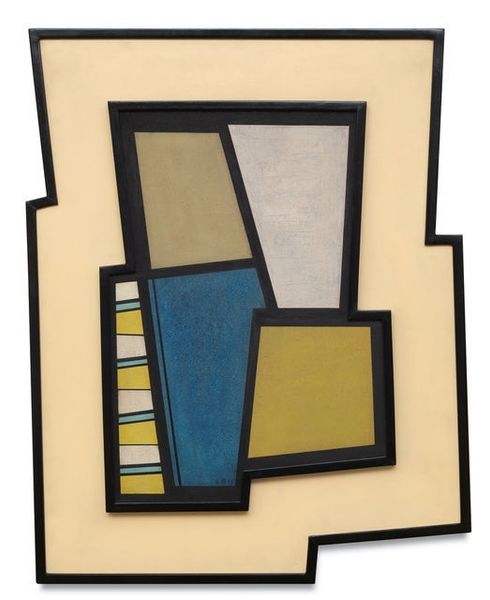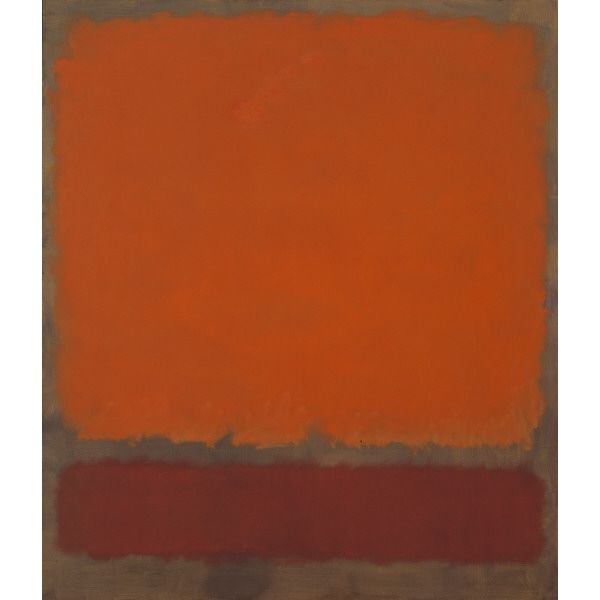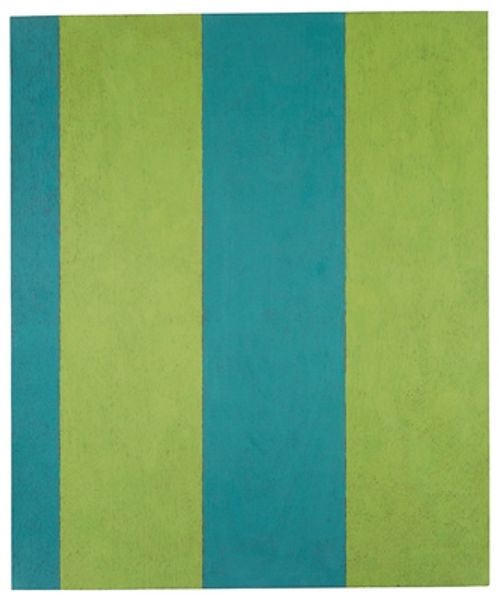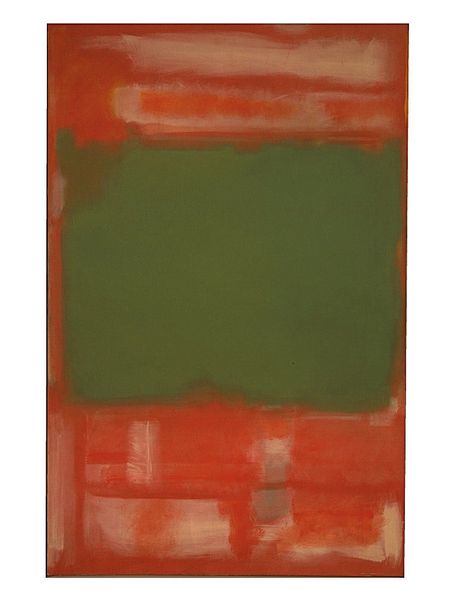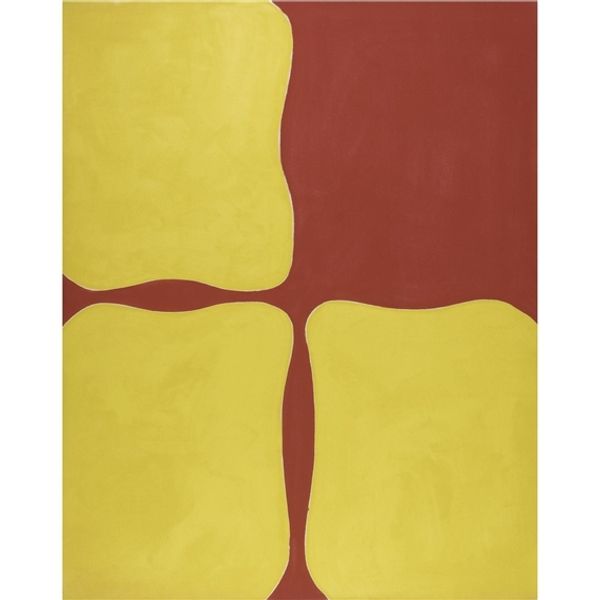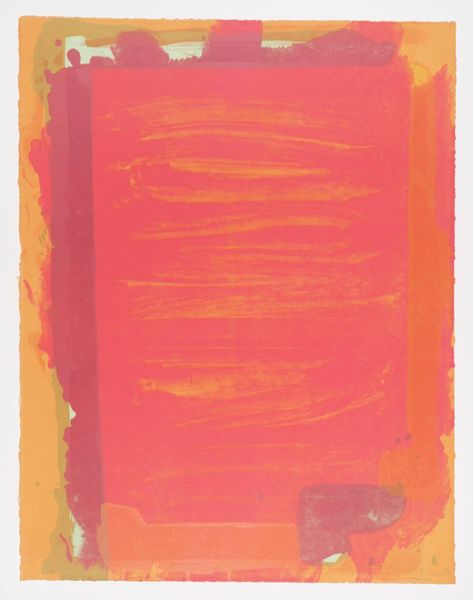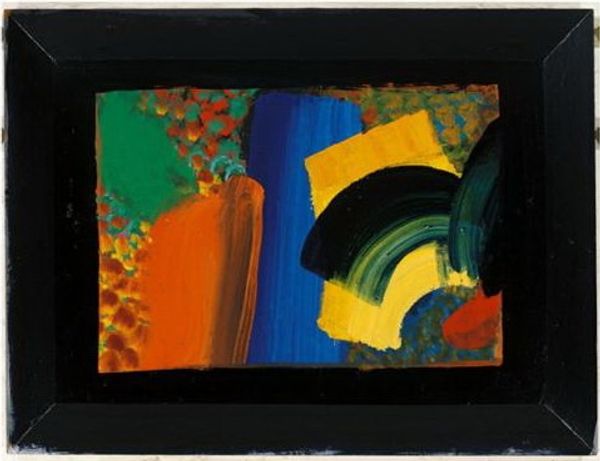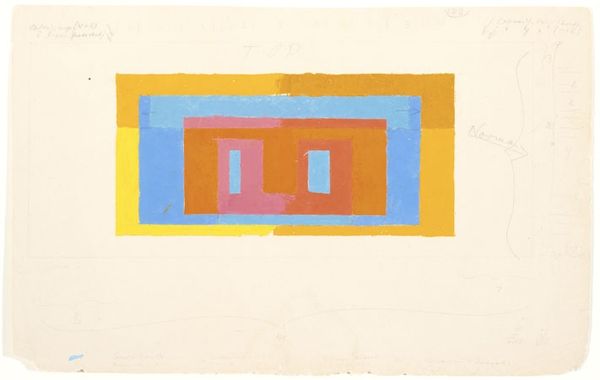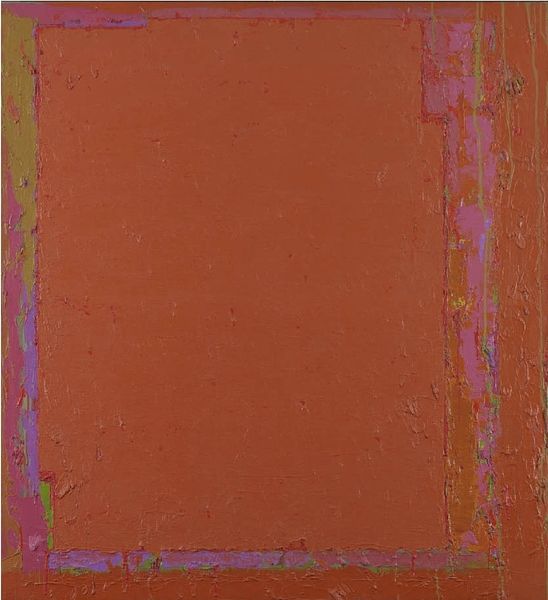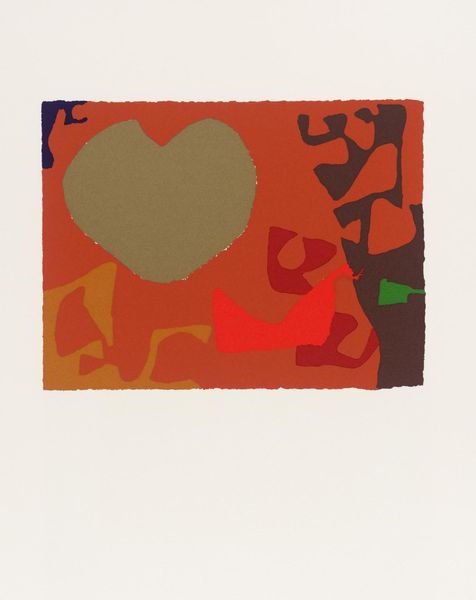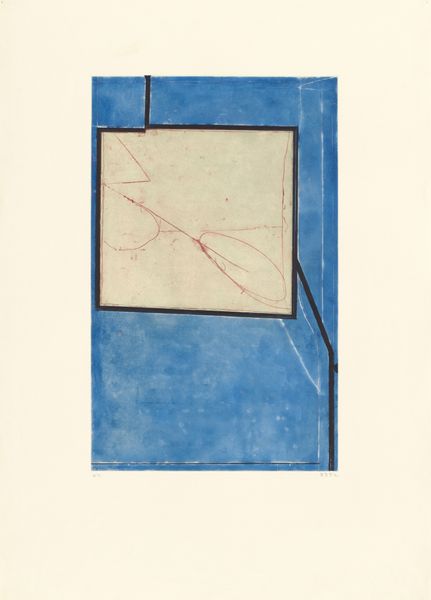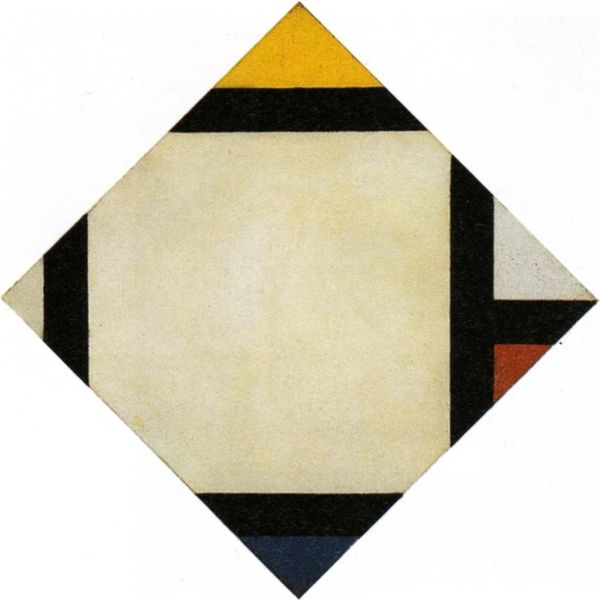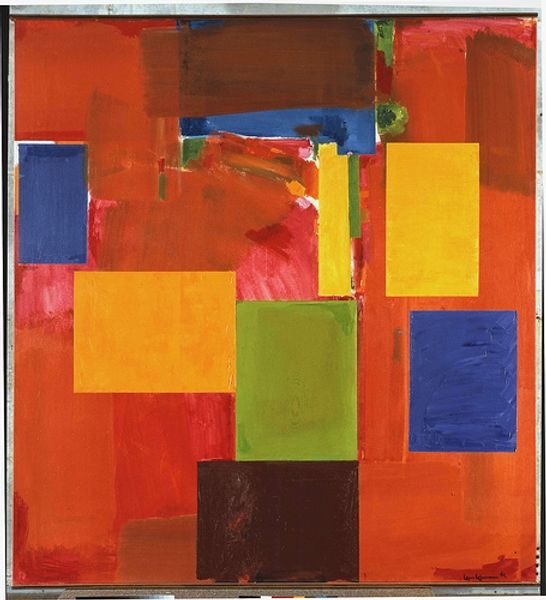
mixed-media, painting
#
mixed-media
#
concrete-art
#
painting
#
form
#
geometric
#
geometric-abstraction
#
abstraction
#
line
#
modernism
Copyright: Carmelo Arden Quin,Fair Use
Curator: Here we have Carmelo Arden Quin’s mixed-media composition, "Jar," created around 1946. It's a striking example of his early engagement with geometric abstraction. Editor: Immediately, the muted tones catch my eye. It feels quite restrained, almost hesitant, yet there's a strange sense of balance achieved through those asymmetrical shapes. Curator: Arden Quin, deeply embedded in the Concrete Art movement, sought to eliminate all allusions to external reality. It was a conscious departure from traditional representation, fueled by post-war avant-garde circles in Buenos Aires. They saw geometric abstraction as a potent tool for social change. Editor: I see that rejection of the external world. The piece operates purely on the level of form. Notice the relationship between the warm, slightly off-center circle in the upper register, and the cooler square beneath it. Curator: And Arden Quin pushed this further. As a co-founder of the Madí movement, he advocated for art that transcended the frame. His work critiqued established artistic norms while reflecting broader political and social unrest. Editor: Indeed. The shaped frame itself disrupts any illusion of depth. It acknowledges the objecthood of the painting. Also that delicate line traversing the lower green square, slightly off-kilter, it disrupts the rigidity. Curator: Precisely. These visual choices echoed his socio-political ideals; this idea that art should not just depict, but actively reshape perception and question accepted forms of power. Editor: It's fascinating how such simple geometric elements, the interplay of these matte surfaces and subtly contrasting colours, can create a composition that feels both grounded and strangely unsettling. Curator: "Jar" really encapsulates Arden Quin's commitment to the Madí principle—inviting viewers to question everything about art's role in society. Editor: This piece prompts us to see beyond the surface, it demands active engagement and disrupts any easy resolution, it makes a good argument.
Comments
No comments
Be the first to comment and join the conversation on the ultimate creative platform.
